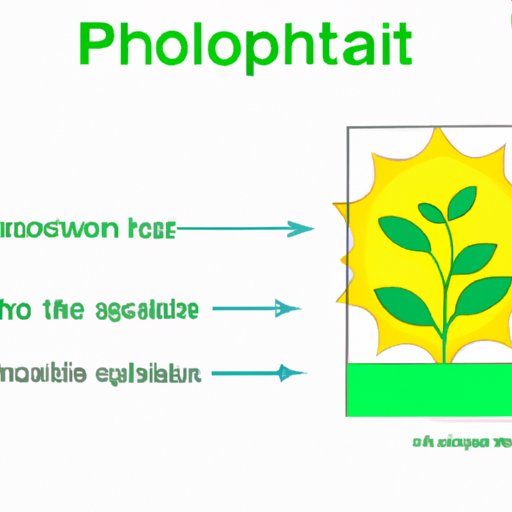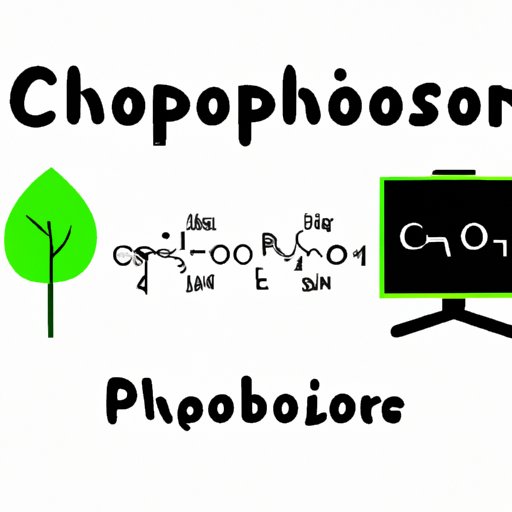I. Introduction
Photosynthesis is a fundamental process in biology, responsible for converting light into energy that sustains life on Earth. Understanding the word equation behind photosynthesis is crucial for scientists, educators, and anyone passionate about environmental science. In this article, we will explore the meaning of the photosynthesis word equation, its significance, and how it impacts our world.
II. Decoding the Process of Photosynthesis: Understanding the Word Equation Behind It All
Photosynthesis is the process by which plants, algae, and some bacteria convert sunlight into glucose and oxygen. This process is essential for life as it produces the oxygen we breathe and fuels the food chain. The word equation for photosynthesis is a representation of the chemical reaction that takes place during the process, and it highlights the inputs and outputs.
The word equation is:
Carbon Dioxide + Water + Light Energy → Glucose + Oxygen
Knowing the word equation is significant because it helps scientists to understand the process of photosynthesis in greater detail. It also makes it easier for them to communicate their research to others and draw connections between different processes in the natural world.
III. The Science Behind Photosynthesis: Breaking Down the Word Equation
Photosynthesis involves a series of complex chemical reactions that occur within chloroplasts, the organelles inside plant cells responsible for photosynthesis. Chlorophyll, the pigment that gives plants their green color, absorbs light energy from the sun and converts it into chemical energy stored in glucose. The word equation highlights the reactants and products of the process, with carbon dioxide and water being the reactants, and glucose and oxygen being the products.
The reaction can be further broken down into two stages: the light-dependent reaction and the light-independent reaction. In the light-dependent reaction, light energy is absorbed by chlorophyll, and water molecules are split into oxygen, electrons, and hydrogen ions. The resulting oxygen is released into the environment, while the electrons and hydrogen ions are used in the light-independent reaction to form glucose.
IV. Photosynthesis Word Equation: Understanding the Key Terminology
The word equation for photosynthesis involves several essential scientific terms, including carbon dioxide, water, glucose, and oxygen. Carbon dioxide is a gas that is produced by living organisms as a waste product, while water is a molecule that is required for life. Glucose is a simple sugar that is used by plants as a source of energy, while oxygen is released into the environment as a byproduct of photosynthesis.
One common misconception about the word equation is that plants simply “breathe in” carbon dioxide and “breathe out” oxygen. In reality, the process is much more complex and involves several chemical reactions that take place inside the plant’s cells. Understanding the terminology is crucial for gaining a deeper understanding of the process of photosynthesis.
Here are some tips for remembering and understanding the key terms:
- Carbon dioxide is a greenhouse gas that contributes to climate change.
- Water is essential for all living organisms, and humans are recommended to drink at least 2 liters per day.
- Glucose is a simple sugar found in fruits, vegetables, and honey.
- Oxygen is a gas that is essential for aerobic respiration, the process by which cells convert glucose into energy.
V. Why Understanding the Photosynthesis Word Equation is Important for the Environment
Photosynthesis is a crucial part of the carbon cycle, which is the process by which carbon dioxide is converted into organic matter and back into CO2. Understanding the word equation helps us to see how photosynthesis fits into this cycle and how it impacts our planet.
Photosynthesis has a direct impact on the planet’s ecosystems, as it produces the oxygen that we breathe and provides food for all living organisms. Additionally, photosynthesis plays a critical role in mitigating climate change by absorbing excess carbon dioxide from the atmosphere and storing it in plants and other organic matter.
By understanding the word equation and the science behind photosynthesis, scientists can better study and protect the environment. They can develop more effective strategies for combating climate change, conserving biodiversity, and promoting sustainable agriculture.
VI. Breaking the Photosynthesis Code: Learning the Word Equation for Better Science Communication
Clear communication of scientific ideas is essential for advancing our knowledge of the world and for addressing global challenges. Knowing the word equation for photosynthesis can help scientists communicate their research more effectively and make connections between different fields.
Understanding the word equation can improve the way scientists communicate about photosynthesis and other aspects of environmental science, making it easier for people without a scientific background to understand complex concepts. This, in turn, can lead to more productive conversations, better decision-making, and a more informed public.

VII. Teaching Photosynthesis: How to Explain the Word Equation to Students
Science education is crucial for inspiring the next generation of scientists and environmentalists. By making science accessible and engaging, educators can help students develop a love for learning and an appreciation for the natural world. Here are some tips for teaching the word equation for photosynthesis:
- Use hands-on activities and experiments to reinforce the concepts of photosynthesis and the word equation
- Explain the relevance of photosynthesis to real-world problems, such as climate change and food security
- Break down the scientific terminology into simpler terms and provide examples of each component
- Encourage students to ask questions and explore the topic further on their own
VIII. Conclusion
The word equation for photosynthesis is a vital tool for understanding the process of converting light into energy that sustains life on Earth. By decoding the word equation and diving deeper into the science of photosynthesis, we can better understand its significance for the environment and for scientific communication and education. We encourage readers to continue exploring this fascinating topic and to share their knowledge with others.
